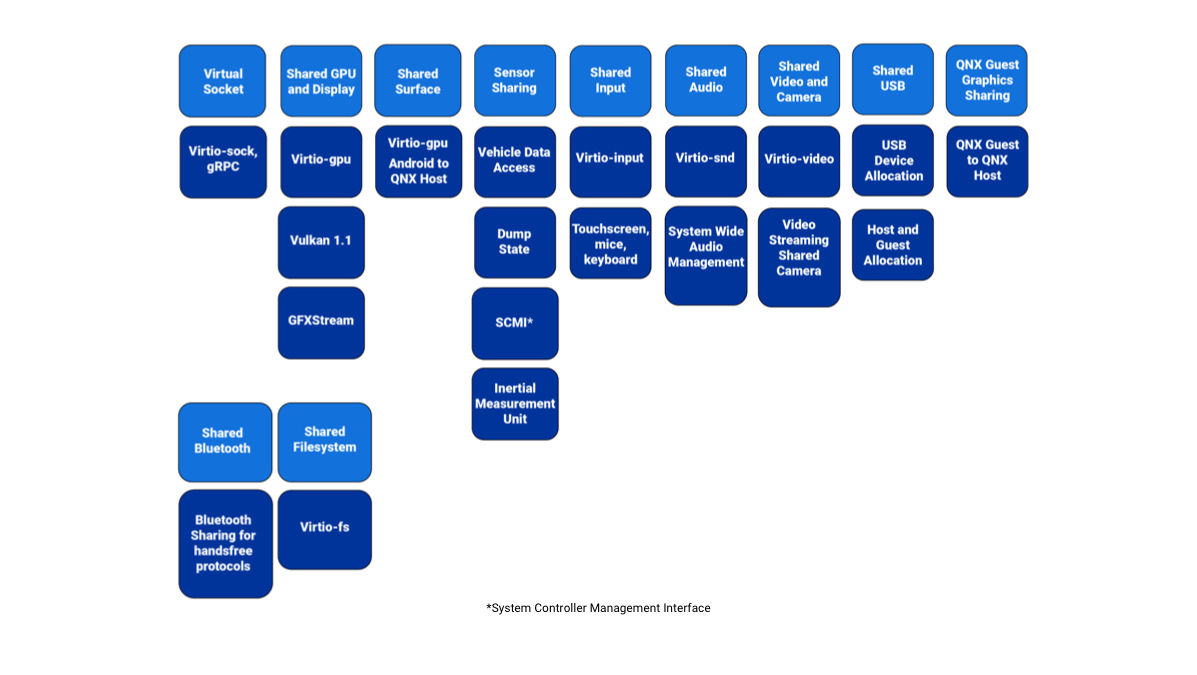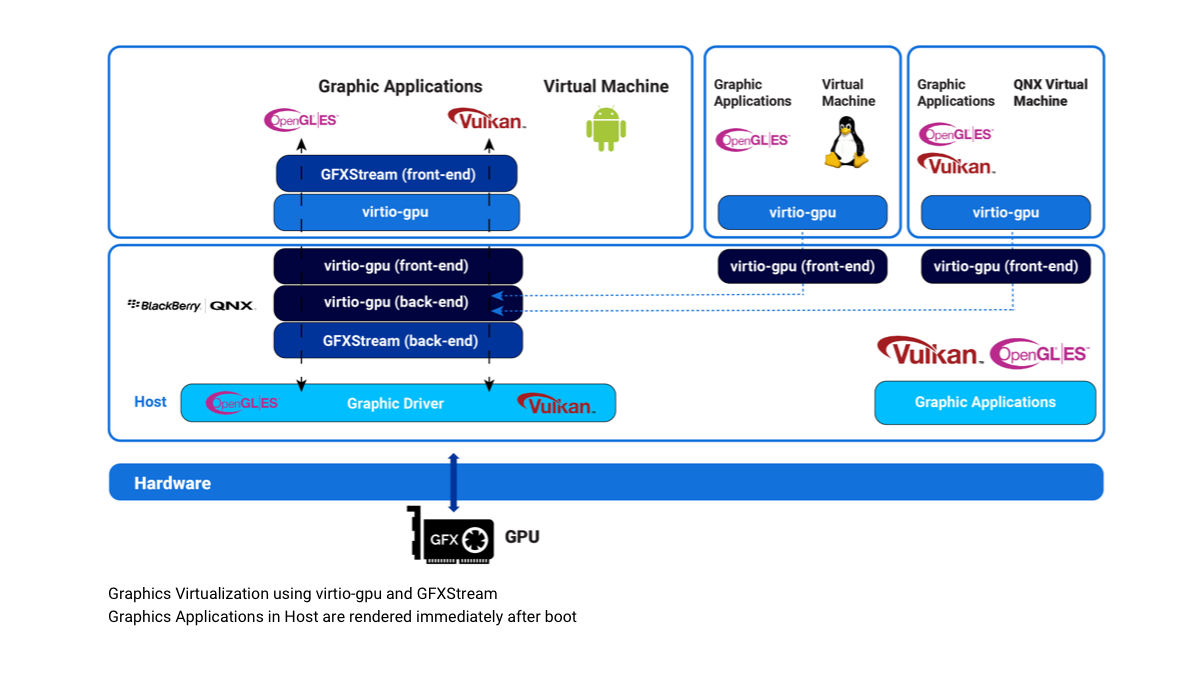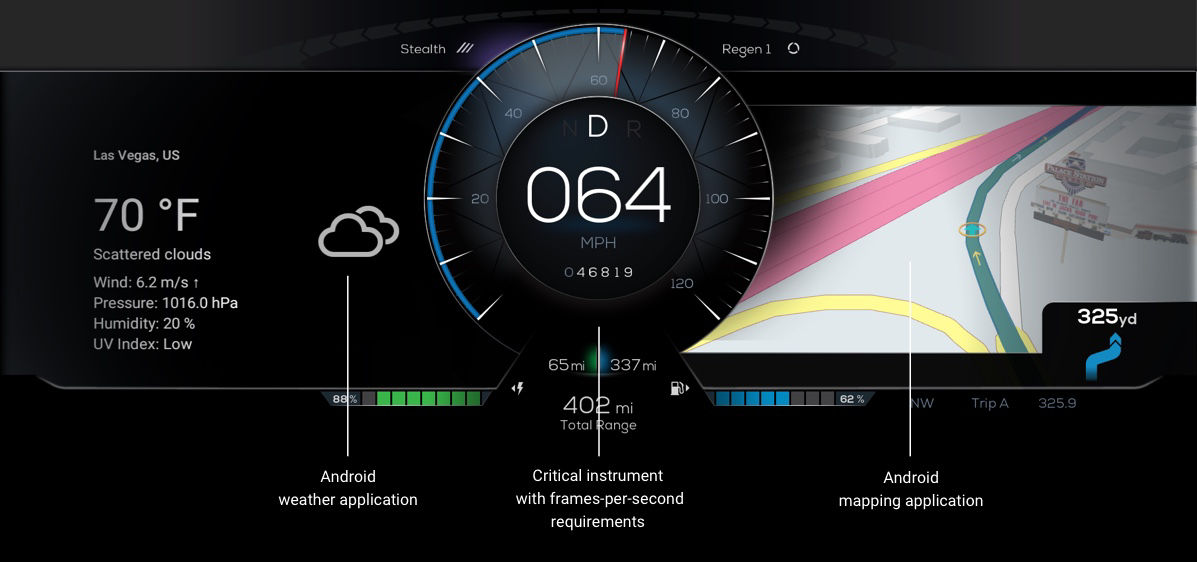QNX Advanced Virtualization Frameworks
Enable standards-based sharing of advanced devices between guest operating systems.
Extend the QNX Hypervisor with Advanced Virtualization for Android, Linux and QNX Guests
The QNX® Advanced Virtualization Frameworks (QAVFs) extend the QNX® Hypervisor and the QNX® Hypervisor for Safety, providing advanced virtualization software components that enable guests such as Android®, Linux® and QNX® to coexist in a complex environment that involves security, safety-certification, device abstraction, and device sharing.
By following open standards such as VIRTIO, an unmodified Android and Linux guest can share underlying hardware and advanced software services such as graphic displays, acoustic environments, touchscreens, media storage devices, video streams, cameras, communications, Bluetooth® and more.
The QAVFs allow a device to be shared outside of the guest. This is an important feature that enables responsive user experiences. For example, it enables users to interact with a hardware device such as a camera, display, audio or touchscreen while the guest is still booting.
Stay Up to Date

Meet Production Requirements
The QAVF design does not require a Service OS. Production requirements related to boot times, performance, failure handling, safety and security become simpler to achieve and easier to manage. The secure hypervisor environment that is immediately available after boot contains the backend services used by the Android and Linux guests. A backend service is available for use before the guests are active. In addition, if the guest is compromised, the shared device is still responsive to other applications running alongside the virtual machines; for example, a touchscreen and graphic display is responsive to the user even if Android is in an incorrect state.
This simple design reduces system complexity.

Create a Unified User Experience


Familiar Development Environment and Demonstration Software
The QAVFs include a fully functioning demonstration system with Android guest, showcasing all features of the advanced device sharing.
A developer’s API reference and developer’s guide allow you to modify and extend the frameworks for your own needs without compromising on the built-in guest support. For example, multiple cameras can be managed in the backend services to project images into both Android guests and dedicated displays at the same time.
If you’re familiar with POSIX and the QNX® Neutrino® RTOS, you’ll require no ramp-up time to begin your virtualization development work: the QAVFs are fully compatible with the QNX Neutrino RTOS API.
You’ll be able to develop non-safety as well as safety-critical applications on the same foundations, and of course you’ll be able to continue working in the POSIX-compliant QNX® Software Development Platform environment, and using the QNX® Momentics® Tool Suite.
Related Products and Services




- OpenGL is a registered trademark and the OpenGL ES logo is a trademark of Hewlett Packard Enterprise used by permission by Khronos.
- Vulkan and the Vulkan logo are registered trademarks of the Khronos Group Inc.
- The Android robot is reproduced or modified from work created and shared by Google and used according to terms described in the Creative Commons 3.0 Attribution License.